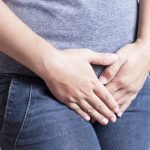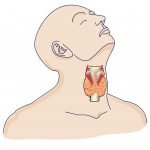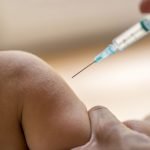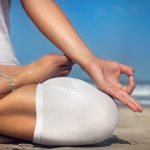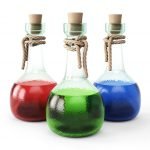Ayahuasca: Tradition, Context, & Clinical Applications
Tanya Maté, ND
In naturopathic medicine, one of our guiding principles is to treat the root cause, and yet we rarely manage to do this. As Dr Paul Epstein says, “Balancing the immune system and biochemical pathways, though important, may not be addressing the underlying factors which cause many of these chronic ailments.”1 Those underlying factors are almost always mental/emotional – or as I prefer, psychospiritual – in origin. This is as true for chronic back pain as it is for patients struggling with autoimmune conditions, fibromyalgia, depression, and post-traumatic stress disorder (PTSD).
Ayahuasca, a spirit-plant medicine indigenous to South America, is a powerful tool that helps people to see and heal the psychospiritual roots of chronic illness. There are different traditions in which it is used, and there is published evidence of its efficacy. Its legal status is questionable in North America due to its containing dimethyltryptamine (DMT) and harmaline, both of which are scheduled substances; however, that isn’t stopping people from pursuing treatment with this powerful medicine.
What is the role of the naturopathic physician in the growing ayahuasca trend? Like any health trend, it is the responsibility of naturopathic doctors to be informed about what it is, the potential benefits and risks, and to know when to refer out to practitioners that can support those patients who choose to pursue this medicine.
Botanically Sophisticated
Ayahuasca is one of the names given to a decoction of the vine ayahuasca (Banisteriopsis caapi) and another plant, most commonly the leaves of chacruna (Psychotria viridis).2 Chacruna contains DMT, a constituent with serotonin-receptor activity that can produce a visionary effect. Meanwhile, the ayahuasca vine contains the harmala alkaloids (harmine, harmaline, tetrahydroharmine), which act as monoamine oxidase inhibitors (MAOIs). DMT, when ingested, would normally be broken down in the stomach before it has a chance to cross into the brain. When these 2 plants are combined, however, the MAOI activity of the vine allows the DMT to cross into the brain, which in turn leads to the visionary effect that many users report experiencing.3-5
In terms of actions, the plant brew known as ayahuasca is entheogenic, serotonergic, emetic, purgative, and anti-parasitic. It can lead to changes in perception, affect, cognition, and physical sensation,6 as well as changes in frontal and paralimbic activation in the brain, resulting in altered emotional processing.7 Ayahuasca is described as both a doctor and a teacher, meaning it has the ability to both help heal people from illness and to help them learn about themselves. It seems to have a particular affinity for helping people overcome and recontextualize – ie, heal – traumatic childhood experiences.
Ceremonial Traditions
Much like Eastern traditions that have made their way to the West, there are different lineages in which ayahuasca is used as a passageway to spiritual development, or deep healing, or both. There are a few well-established ayahuasca traditions, and it seems that more and more groups offering their own take on ayahuasca ceremonies are popping up all the time.8,9
Both the Santo Daime and União do Vegetal are lineages based in Brazil that incorporate Christian mythology into their work. The ceremonies are collaborative and expressive, and regular participants often attend weekly. I know little about these traditions other than that they exist and have widespread followings.
There are many traditions that come from Peru, Colombia, and Ecuador. Of these, those from the Peruvian Amazon seem to be the most well established in North America at this point, particularly the Shipibo tradition, with which I am the most familiar. This is very much a healing-focused tradition; it is a comprehensive healthcare system where practitioners of medicine (known variously as shamans, ayahuasqueros, curanderos, maestros, bancos, etc) use plant spirits and songs known as icaros to aid in healing work for ceremony participants. The ceremonies take place in the dark, and the ayahuasqueros chant to the participants, essentially performing psychic surgeries with the aid of plant-guided spiritual insight, removing energetic blockages and directing the spirit of ayahuasca and other master plants deep into the places where healing is needed. In addition to the icaros, the practitioners may use tools such as blowing (soplar), tobacco smoke, perfume, and sucking (chupar) to aid in moving and removing energies, calling in light, and protecting the work that has been done.
Therapeutic Potential
I have seen people heal from many medical conditions, with the help of ayahuasca ceremonies. Suicidal depression, anxiety, addictions to substances and behaviors, PTSD, autoimmune conditions, physical pain – many of the diagnoses that Western medicine offers little hope for – not only become manageable but can actually disappear. For many naturopathic doctors, witnessing this kind of healing is not unusual; ayahuasca offers a fast track to the self, and this is a place that can be reached through other avenues (eg, meditation, therapy, homeopathy). This is not to say that ayahuasca is a panacea – it is emphatically not – but that it has a potential to help people overcome conditions that previously, at best, had been well-managed but inescapable parts of their lives.
Nor is it the case that ayahuasca on its own does this work. Patients must be willing to look deeply at the parts of themselves they have been hiding from for a long time, and must be willing to put in the necessary work both before and after, if any healing is to last. The medicine can only reveal the truth; it cannot force anyone to look at it or accept it.
That said, the research does support ayahuasca as a tool for healing many conditions. Some highlights and personal observations are discussed here.
Depression & Anxiety
Studies in both ceremonial/religious contexts and clinical settings show improvement in symptoms of depression and anxiety after using ayahuasca. Participants reported up to an 82% reduction in symptoms after a single dose.10 These results, obtained in a clinical setting, provide evidence for the efficacy of the medicine itself, irrespective of ceremonial components.
I’ve seen people with severe depression who have found healing from their condition through the use of ayahuasca. This is rarely achieved in a single ceremony; it requires dedication on the part of the patient and can take many ceremonies to achieve this healing. I have also seen people with depression who have not yet found lasting relief through ayahuasca; however, there does generally seem to be a substantial relief from symptoms that lasts anywhere from a few weeks to a few months. As is true with any condition, successful healing depends largely on the social supports and integration process of each individual.
Addictions
Ayahuasca is perhaps best known for its potential in treating addictive behaviors; however, rigorous studies supporting this reputation are few. A study done in British Columbia in 201111 showed decreased alcohol and cocaine use in a First Nations population after retreats coupling ayahuasca ceremonies with group psychotherapy. Another study looking at ritual users of ayahuasca found significantly lower rates of illicit drug use compared to the general population.12 Centers such as Takiwasi in Peru, and the Instituto de Etnopsicología Amazónica Aplicada (IDEAA) in Brazil report success in treating addictions.
Most of the people who I’ve seen come to ayahuasca for help with their addictions – ranging from mild to severe, and including food, substances such as heroin, alcohol, and cocaine, and sex and pornography – have seen significant improvements in their lives and reductions in the addictive behaviors; several of them have achieved sustained recovery. It is common for people to report that they understand for the first time, on a felt-sense level, where these addictive processes came from, and for them to report that their relationship with whatever drug or behavior changed so significantly that they no longer feel the pull to engage with it in the same way. The people who are most successful with achieving sustained recovery are those with a well-established support network and those with committed integration processes.
Ayahuasca itself does not appear to be addictive: regular users report that “[ayahuasca] experiences transcend the merely perceptual or recreational aspects of psychoactive drug effects” and that both novelty-seeking and impulsiveness behaviors, which tend to be increased in people with addictions, do not differ from control groups.13
PTSD
Post-traumatic stress disorder is a notoriously challenging condition to work with; recent studies looking at the use of MDMA for treatment-resistant-PTSD have shown preliminary success, and studies using ayahuasca for treating PTSD in combat veterans are planned. A chapter by Nielson and Megler in The Therapeutic Use of Ayahuasca examines its potential for PTSD treatment.14
I’ve seen mixed results with severe PTSD. There is huge potential for ayahuasca in the treatment of PTSD, but each person should be considered on an individual basis. In those patients with severe, complex PTSD, especially those with high levels of hypervigilance and hyperarousal and who are prone to dissociation, the size and sounds of a full ceremony can be overwhelming. This doesn’t preclude the use of ayahuasca, but it seems that smaller ceremonies with a high level of psychological support from trained facilitators would be ideal for this population.
General Well-being
Increased mindfulness (including non-judgment, non-reaction, and observation),15 self-acceptance, and spiritual transcendence are all found in ayahuasca users, as is generally better psychological well-being.16 Improvement in these traits is thought to be at least partially responsible for the improvements seen in addictions and mental distress.
Preparation & Integration
In psychedelic-assisted psychotherapeutic processes, the arc of healing is often broken down into 3 phases: preparation, which often includes intention-setting; the experience itself; and post-ceremony integration. With ayahuasca, the preparation phase includes following strict dietary guidelines: in addition to avoiding those foods that could interact with MAOIs (eg, tyramine-containing foods), salt, pork, alcohol, and other recreational drugs are strictly avoided for up to 3 weeks pre-ceremony.
Integration includes following post-ceremony dietary restrictions, and is about bringing ayahuasca teachings into life. Part of this process is reflective and intuitive; people often feel vulnerable, and moving slowly, spending time in nature, and being gentle with themselves is encouraged. Integration involves work on physical, psychological, emotional, social, and spiritual levels.
The process of both preparation and integration is more powerful if supported by experienced facilitators. There are a few organizations that offer directories of practitioners able to offer this support, such as the California-based MAPS17 and ERIE18; Jubilant People19 is developing a Canadian version.
Safety Considerations
As with anything where there is a sudden increase in interest from the West, and a relative power imbalance between participants and the people in charge, there is the potential for corruption. Reports of irresponsible and inexperienced practitioners leading ceremonies, as well as sexual misconduct, exist; the Women’s Visionary Congress has published a list of considerations for folks attending ceremonies.20
There have been a handful of ayahuasca-associated deaths in South America. Most deaths are the result of ayahuasca admixtures containing Toé (Brugmansia spp, related to Datura spp, anticholinergic-containing visionary plants) or ingested tobacco, or the fact that these individuals had a pre-existing medical condition that could perhaps have been discovered with more rigorous medical screening. Responsible centers or group should have a medical and psychological screening as part of their intake process, and it is suggested that people new to ayahuasca work with brews that contain only B caapi and P viridii, under the guidance of an experienced practitioner. A recent stabbing at a center in Peru made headlines, and while it’s difficult to say what exactly happened, it is again possible that proper screening could have prevented this situation.
Ayahuasca is contraindicated in people who have a history of psychosis or recent psychotic break or Bipolar I Disorder, due to the small risk of triggering psychosis or mania. People who are taking antidepressant or stimulant medications should not drink ayahuasca, due to the MAOI activity and the potential for serotonin syndrome.21 People should follow the dietary restrictions as prescribed by the practitioner with whom they are working.
Conclusion
Ayahuasca is a powerful plant with incredible therapeutic potential, and care should be taken to ensure that patients who are working with this medicine are doing so in a safe way.
 Tanya Maté, ND is the Vancouver-based Integration Director at the Temple of the Way of Light an ayahuasca healing centre in Peru. She is also a workshop facilitator, a lover of plant medicines, and a student and teacher of spirituality. She has trained with her father-in-law, Dr. Gabor Maté in his unique style of guided self-inquiry, and, together with her husband Daniel Maté facilitates processing and integration circles in Vancouver, BC. Tanya is passionate about helping people identify whatever is in the way of personal and interpersonal connection. She works from a biopsychosocial-spiritual understanding of health, and believes that true healing is possible for each and every person. Connect with her at www.drtanyamate.com.
Tanya Maté, ND is the Vancouver-based Integration Director at the Temple of the Way of Light an ayahuasca healing centre in Peru. She is also a workshop facilitator, a lover of plant medicines, and a student and teacher of spirituality. She has trained with her father-in-law, Dr. Gabor Maté in his unique style of guided self-inquiry, and, together with her husband Daniel Maté facilitates processing and integration circles in Vancouver, BC. Tanya is passionate about helping people identify whatever is in the way of personal and interpersonal connection. She works from a biopsychosocial-spiritual understanding of health, and believes that true healing is possible for each and every person. Connect with her at www.drtanyamate.com.
References
- Epstein P. Childhood trauma and adult disease: what’s the real diagnosis? NDNR. 2013;9(6):1. Available at: www.ndnr.com/mindbody/childhood-trauma-and-adult-disease/. Accessed February 15, 2016.
- Rivier L, Lindgren JE. “Ayahuasca,” the South American Hallucinogenic Drink: An Ethnobotanical and Chemical Investigation. Economic Botany. 1972;26(2):101-129.
- Callaway JC, Raymon LP, Hearn WL, et al. Quantitation of N, N-dimethyltryptamine and harmala alkaloids in human plasma after oral dosing with ayahuasca. J Anal Toxicol.1996;20(6):492-497.
- Riba J, Valle M, Urbano G, et al. Human pharmacology of ayahuasca: subjective and cardiovascular effects, monoamine metabolite excretion, and pharmacokinetics.J Pharmacol Exp Ther. 2003;306(1):73-83.
- McKenna DJ, Callaway JC, Grob CS. The scientific investigation of Ayahuasca: a review of past and current research.The Heffter Review of Psychedelic Research. 1998;1:65-77. Available at: https://www.erowid.org/chemicals/ayahuasca/ayahuasca_journal3.shtml. Accessed February 15, 2016.
- Riba J, Rodríguez-Fornells A, Urbano G, et al. Subjective effects and tolerability of the South American psychoactive beverage Ayahuasca in healthy volunteers. Psychopharmacology (Berl).2001;154(1):85-95.
- Riba J, Romero S, Grasa E, et al. Increased frontal and paralimbic activation following ayahuasca, the pan-Amazonian inebriant.Psychopharmacology (Berl). 2006;186(1):93-98.
- Tupper KW. The globalization of ayahuasca: harm reduction or benefit maximization?Int J Drug Policy. 2008;19(4):297-303.
- Labate BC, Jungaberle H, eds. The Internationalization of Ayahuasca. Zurich, Switzerland: LIT Verlag Münster; 2011.
- Osório Fde L, Sanches RF, Macedo LR, et al. Antidepressant effects of a single dose of ayahuasca in patients with recurrent depression: a preliminary report.Rev Bras Psiquiatr. 2015;37(1):13-20.
- Thomas G, Lucas P, Capler NR, et al. Ayahuasca-assisted therapy for addiction: Results from a preliminary observational study in Canada.Curr Drug Abuse Rev. 2013;6(1):30-42.
- Fábregas JM, González D, Fondevila S, et al. Assessment of addiction severity among ritual users of ayahuasca.Drug Alcohol Depend. 2010;111(3):257-261.
- Bouso JC, González D, Fondevila S, et al. Personality, psychopathology, life attitudes and neuropsychological performance among ritual users of ayahuasca: a longitudinal study.PLoS One. 2012;7(8):e42421.
- Nielson JL, Megler JD. Ayahuasca as a Candidate Therapy for PTSD. In: Labate BC, Cavnar C, eds.The Therapeutic Use of Ayahuasca. Germany: Springer Berlin Heidelberg; 2014: 41-58.
- Soler J, Elices M, Franquesa A, et al. Exploring the therapeutic potential of Ayahuasca: acute intake increases mindfulness-related capacities. Psychopharmacology (Berl). 2016;233(5):823-829.
- Barbosa PC, Giglio JS, Dalgalarrondo P. Altered states of consciousness and short-term psychological after-effects induced by the first time ritual use of ayahuasca in an urban context in Brazil.J Psychoactive Drugs. 2005;37(2):193-201.
- Multildisciplinary Association for Psychedelic Studies. 2016. MAPS Web site. http://www.maps.org. Accessed February 15, 2016.
- Entheogenic Research Integration & Education. 2016. ERIE Web site. http://www.erievision.org. Accessed February 15, 2016.
- Jubilant People. Available at: http://www.jubilantpeople.org. Accessed February 15, 2016.
- 20 Safety Tips for Participating in Ceremonies That Use Psychoactive Substances. December 30, 2014. Women’s Visionary Congress. Available at: http://visionarycongress.org/20-safety-tips-for-participating-in-ceremonies-that-use-psychoactive-substances/. Accessed February 15, 2016.
- Callaway JC, Grob CS. Ayahuasca preparations and serotonin reuptake inhibitors: a potential combination for severe adverse interactions. J Psychoactive Drugs.1998;30(4):367-369.




